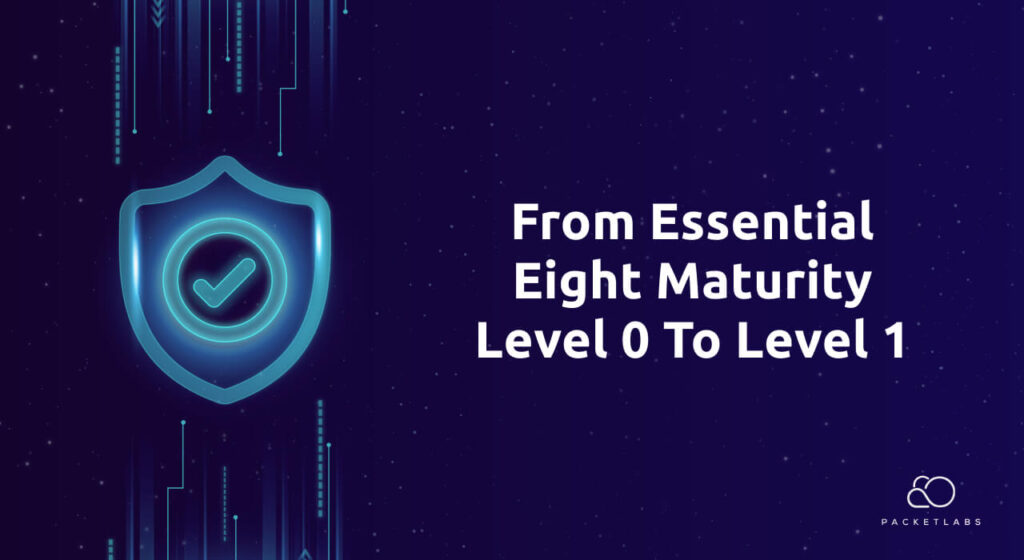
The Essential Eight maturity model, established by the Australian Signals Directorate (ASD), offers a strategic framework for organizations aiming to shield themselves against cyber threats and enhance their cybersecurity posture.
This model encompasses eight crucial strategies for bolstering cybersecurity: application whitelisting, application patching, Microsoft Office macro settings configuration, user application hardening, administrative privileges restriction, operating systems patching, multi-factor authentication, and daily backups.
Understanding the significance of the Essential Eight is pivotal for cybersecurity, as it lays out a roadmap for organizations to fortify their security stance and safeguard against cyber threats. By adopting the Essential Eight strategies, organizations can markedly diminish the likelihood of successful cyber-attacks and lessen the ramifications of any breaches.
The journey from Essential Eight maturity level 0 to level 1 is crucial, aiming to furnish organizations with actionable insights on enhancing their cybersecurity framework. This guide intends to enlighten readers on the criticality of cybersecurity and offer a sequential roadmap to bolster their security measures. Furthermore, it accentuates the advantages of progressing from level 0 to 1, like augmented risk management and operational efficiency.
What Does Maturity Level 0 Entail in the Essential Eight Model?
Maturity level 0 signifies the nascent stage of cybersecurity maturity within organizations, characterized by the absence or partial implementation of the Essential Eight strategies.
Organizations at this level often exhibit rudimentary or non-existent cybersecurity measures, potentially lacking essential security controls such as anti-virus software, firewalls, and intrusion detection systems. There might be a gap in understanding cybersecurity risks, documented policies, and procedures for risk management.
Moreover, there’s likely a deficiency in employee cybersecurity awareness and comprehension of their role in safeguarding the organization’s assets.
Advancing from maturity level 0 is imperative for reinforcing an organization’s cybersecurity posture. Adopting the Essential Eight strategies enables organizations to substantially mitigate cyber threats and safeguard their critical assets. Neglecting to progress from level 0 can lead to dire cybersecurity breaches, data theft, financial losses, reputational damage, and potential legal and regulatory consequences.
Achieving Maturity Level 1 in the Essential Eight Model
Attaining maturity level 1 symbolizes the first stride toward cybersecurity maturity within an organization.
It indicates the implementation of a foundational set of security controls based on the Essential Eight strategies.
Organizations at this level have established security controls such as anti-virus and anti-malware software, software patching protocols, and user application hardening measures.
They possess a comprehensive understanding of their cybersecurity risks and have in place documented policies and procedures for risk management. Employees are trained in cybersecurity awareness, understanding their responsibilities in protecting the organization’s assets.
The transition to maturity level 1 offers numerous benefits, including demonstrating a proactive stance on cybersecurity and significantly reducing the risk of cyber threats.
This level of preparedness can help minimize the impact of breaches, financial losses, and reputational damage. Moreover, it can enhance operational efficiency by reducing downtime due to cybersecurity incidents and provide a competitive edge by showcasing a commitment to data protection.
Step-by-Step Guide: Advancing from Level 0 to 1
1. Conduct a Cybersecurity Risk Assessment
Begin with a comprehensive assessment to identify and evaluate cybersecurity risks across the organization.
1. Conduct a Cybersecurity Risk Assessment
Begin with a comprehensive assessment to identify and evaluate cybersecurity risks across the organization.
2. Develop a Cybersecurity Policy
Craft a policy that outlines the cybersecurity strategy, covering all organizational operations.
3. Implement Anti-Virus and Anti-Malware Software
Ensure all endpoints are protected with up-to-date software.
4. Adopt Software Patching Practices
Regularly update all software to mitigate known vulnerabilities.
5. Harden User Applications
Take measures like disabling unnecessary macros and browser plugins to reduce attack vectors.
6. Establish an Employee Cybersecurity Training Program
Educate employees on best practices and their roles in cybersecurity.
7. Deploy Multi-Factor Authentication
Add an extra security layer for accessing critical systems and data.
8. Maintain Regular Data Backups
Ensure critical data is backed up routinely to facilitate recovery in the event of an incident.
By methodically following these steps, organizations can significantly uplift their cybersecurity posture from Essential Eight maturity level 0 to 1. Remember, cybersecurity is a continuous journey, necessitating regular reviews and updates of policies and controls to stay ahead of evolving threats.
Benefits of Transitioning to Essential Eight Maturity Level 1
Elevating from level 0 to 1 in the Essential Eight maturity model confers several advantages:
- Enhanced Cybersecurity Posture: Significantly strengthens defenses against cyber threats.
- Improved Risk Management: Enables effective identification and management of cybersecurity risks.
- Operational Efficiency: Reduces downtime and enhances business operations.
- Regulatory Compliance: Assists in meeting regulatory requirements and avoiding penalties.
- Competitive Advantage: Demonstrates to stakeholders a serious commitment to cybersecurity.
By methodically following these steps, organizations can significantly uplift their cybersecurity posture from Essential Eight maturity level 0 to 1. Remember, cybersecurity is a continuous journey, necessitating regular reviews and updates of policies and controls to stay ahead of evolving threats.

